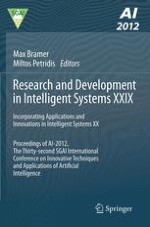The papers in this volume are the refereed papers presented at AI-2012, the Thirty-second SGAI International Conference on Innovative Techniques and Applications of Artificial Intelligence, held in Cambridge in December 2012 in both the technical and the application streams.
They present new and innovative developments and applications, divided into technical stream sections on Data Mining, Data Mining and Machine Learning, Planning and Optimisation, and Knowledge Management and Prediction, followed by application stream sections on Language and Classification, Recommendation, Practical Applications and Systems, and Data Mining and Machine Learning. The volume also includes the text of short papers presented as posters at the conference.
This is the twenty-ninth volume in the Research and Development in Intelligent Systems series, which also incorporates the twentieth volume in the Applications and Innovations in Intelligent Systems series. These series are essential reading for those who wish to keep up to date with developments in this important field.
